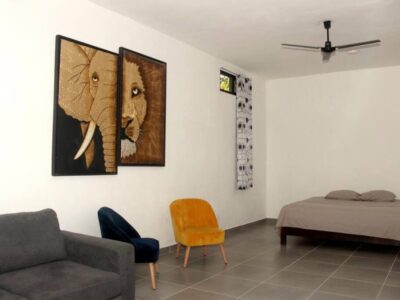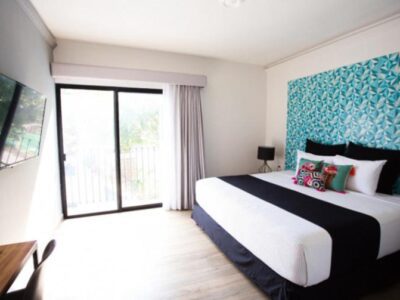Caravanning continues to grow in popularity as people seek affordable, flexible, and adventurous ways to explore the world.
The caravan industry, including stores like Lotus Caravans, is evolving rapidly to meet the demands of modern travelers. Innovations prioritize sustainability, comfort, and smart technology. As we approach 2025, here are the key trends in caravan design that will shape the future of this travel lifestyle.
Eco-Friendly Innovations
Sustainability is a driving force in nearly every industry, and caravanning is no exception. Manufacturers are increasingly focusing on eco-friendly materials and designs to reduce caravans’ environmental impact.
- Solar-Powered Systems: Advanced solar panels integrated into caravan roofs will become more efficient and widespread, providing power for appliances, lighting, and climate control.
- Recycled Materials: The use of sustainable materials, like recycled aluminum and eco-friendly composites, will dominate caravan construction.
- Energy-Efficient Appliances: Expect more energy-efficient air conditioners, refrigerators, and LED lighting systems to minimize power consumption.
Smart Technology Integration
The smart home revolution is making its way into caravans, turning them into highly connected and automated spaces.
- Mobile App Control: Owners will be able to control everything from lighting and temperature to security cameras through their smartphones or tablets.
- Voice-Activated Features: Voice assistants like Alexa or Google Assistant will become standard, allowing for hands-free control of various systems.
- Advanced Navigation Systems: Built-in GPS and real-time traffic monitoring will help travelers find the best routes, campgrounds, and attractions.
Compact Yet Spacious Designs
Efficiency in space usage will be a key focus, ensuring that even smaller caravans offer maximum comfort and utility.
- Expandable Layouts: Slide-out sections and pop-up roofs will become more sophisticated, providing additional living or sleeping space when needed.
- Convertible Furniture: Furniture that serves multiple purposes—like beds that fold into sofas or dining tables that double as workstations—will continue to be popular.
- Smart Storage Solutions: Hidden compartments and modular storage systems will ensure every inch of space is utilized effectively.
Off-Grid Capabilities
The desire for off-grid living is driving innovations that make caravans more self-sufficient and capable of handling remote adventures.
- High-Capacity Batteries: Lithium-ion batteries with extended life and quick recharge capabilities will allow caravans to remain powered off-grid for longer periods.
- Water Purification Systems: Integrated systems for collecting and purifying rainwater will make it easier to travel to remote areas without worrying about water supply.
- Enhanced Insulation: Improved thermal insulation and all-weather materials will keep caravans comfortable in extreme climates.
Luxurious Interiors
Modern travelers expect the same level of comfort in their caravans as they do at home. Designers are focusing on creating interiors that are both functional and luxurious.
- Premium Finishes: High-end materials like bamboo flooring, quartz countertops, and leather upholstery will make caravans feel more like boutique hotels.
- Spa-Like Bathrooms: Compact yet luxurious bathrooms with rainfall showers and high-quality fittings will be a major selling point.
- Customizable Aesthetics: Buyers will have more options to personalize their caravan interiors with a range of colors, textures, and finishes.
Lightweight and Aerodynamic Designs
Reducing weight and improving aerodynamics will remain priorities to enhance fuel efficiency and ease of towing.
- Carbon Fiber Construction: Lightweight yet durable materials like carbon fiber will become more common in caravan builds.
- Streamlined Shapes: Sleek, aerodynamic designs will improve fuel economy while also giving caravans a modern aesthetic.
- Smaller Footprints: Compact caravans with foldable or collapsible features will appeal to environmentally conscious travelers.
Family-Friendly Features
Families remain a key demographic for the caravan market, and designs are evolving to cater to their needs.
- Dedicated Kid Zones: Bunk beds, activity corners, and built-in entertainment systems will make caravans more child-friendly.
- Safety Enhancements: Features like advanced braking systems, anti-sway technology, and childproof locks will provide peace of mind for families on the road.
- Integrated Learning Tools: Built-in desks and storage for educational materials will be essential for families homeschooling on the go.
Shared Caravan Economy
The rise of the sharing economy is influencing how caravans are designed and used.
- Rental-Ready Designs: Features like easy-to-clean surfaces, durable materials, and universal layouts will cater to the growing market of caravan rental services.
- Tracking and Monitoring Tools: Built-in GPS and remote monitoring systems will make it easier for owners to rent out their caravans safely.
- Flexible Ownership Models: Subscription-based services or shared ownership schemes will attract new audiences to the caravanning lifestyle.
Conclusion
As we look ahead to 2025, caravan design is entering an exciting era of innovation. The focus on sustainability, smart technology, and luxurious yet practical living spaces ensures that the caravanning lifestyle remains relevant and appealing to a wide range of travelers. Whether you’re an eco-conscious adventurer, a tech enthusiast, or a family seeking unforgettable experiences, the caravans of the future promise to redefine what it means to travel in comfort and style.
The post The Future of Caravan Design: Trends to Watch in 2025 first appeared on The Yucatan Times.














